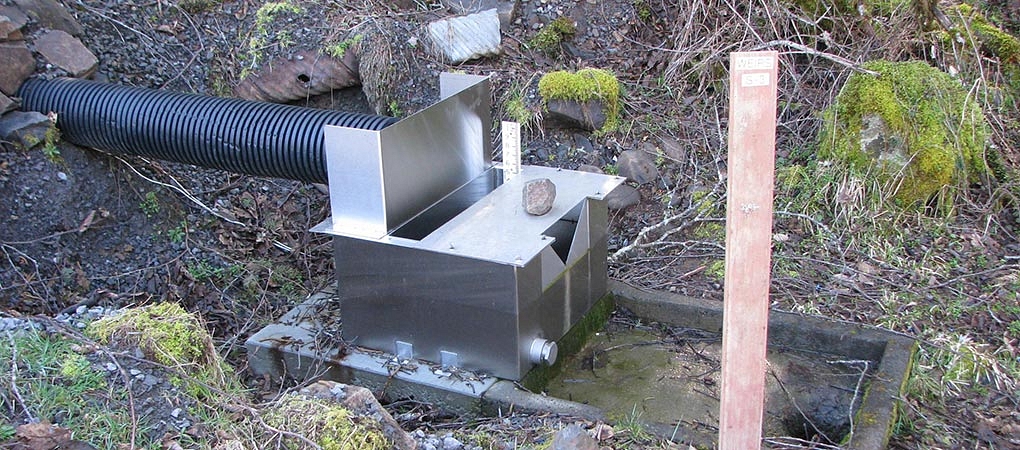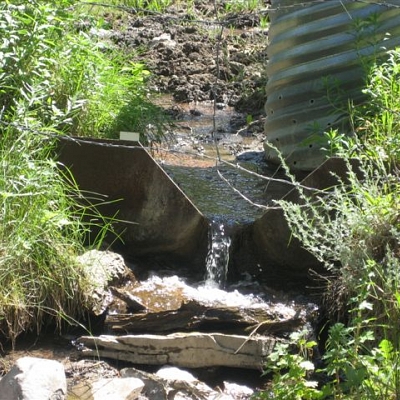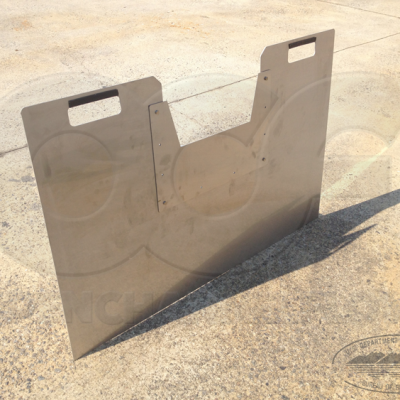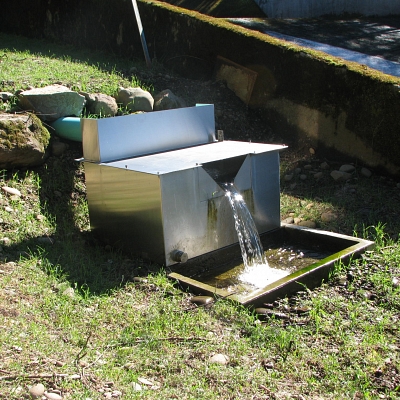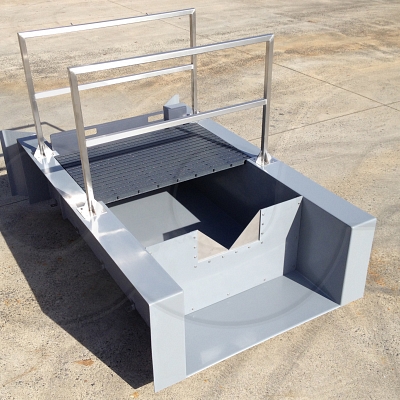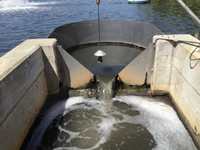 Weirs are common and simple methods of measuring the flow of water in open channels. At its simplest, a weir is no more than an obstruction placed in a channel over which water flows (unlike flumes where the water flows through the structure). Often this flow is over a specially shaped notch or opening set above the floor of the channel.
Weirs are common and simple methods of measuring the flow of water in open channels. At its simplest, a weir is no more than an obstruction placed in a channel over which water flows (unlike flumes where the water flows through the structure). Often this flow is over a specially shaped notch or opening set above the floor of the channel.
Properly size, built, and maintained, a weir can provide inexpensive and accurate flow measurements.
Openchannelflow offers a variety of weirs, including: fixed weir plates, portable weir sets, weir boxes, weir channels, and weir manholes.
Regardless of their configuration, thin-plate weirs must conform to ISO/DIS 1438 Hydrometry – Open Channel Flow Measurement Using Thin-Plate Weirs in their sizing and application.
Weir Materials
When used as standalone structures, weirs are most commonly made from T-304 stainless steel (at least the crest over which the water flows). Other materials are prone to lose dimensional tolerances, swelling, and are susceptible to crest damage.
In weir boxes and channels, while the box / channel material may be something other than stainless steel (fiberglass is common), the weir plate itself should be stainless steel.
How a Weir Operates
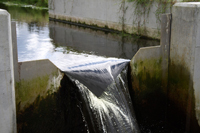 A weir is a fixed obstruction across a channel over which water flows. As the flow passes over the crest and drops into the downstream channel, it accelerates. As with a flume, this acceleration creates a known relationship between upstream level and flow rate.
A weir is a fixed obstruction across a channel over which water flows. As the flow passes over the crest and drops into the downstream channel, it accelerates. As with a flume, this acceleration creates a known relationship between upstream level and flow rate.
The point of measurement of a thin-plate weir should be at least 3-5 times the maximum anticipated head (Hmax). This far upstream of the weir plate and the water level is outside of the drawdown zone nearer to the weir. Like a long-throated flume, a weir does not have a fixed point of measurement – anywhere upstream of the drawdown zone is acceptable.
One drawback to the use of a weir is that the zero reference elevation from which the level is determined is the lowest point of the weir crest downstream of the point of measurement.
It is usually simplest to verify / calibrate the level reading of a weir when the flow has been stopped. The water upstream of the weir crest should just touch the crest itself (but not be lower than the crest elevation).
Weir Construction
In order to allow the nappe (body of water flowing over the weir crest) to spring clear of the weir crest (flow edge), the crest should be no thicker than 3 mm [~1/8-inch] thick. Thicker than this the nappe may collapse against the downstream face of the weir due to insufficient aeration (causing the weir to under-indicate the actual flow rate). Thinner than this and the knife-edge created will be too difficult to maintain.
The crest itself must be sharp and burr-free. Rounded edges, like overly thick crests, tend to allow the nappe to collapse. Flow should always spring clear of the crest.
Weir Limitations
As with any open channel primary device, weirs are not suitable for use on pressurized conduits. Pipes entering a weir pool or box may run full, but should not be pressurized. Piped flow should be well baffled and the approaching velocity profile well distributed before flow reaches the point of measurement.
Weirs should be used with caution on flows with floating trash, debris, or high solids contents as sedimentation will occur upstream of the weir (raising the weir pool depth), and debris may cling to the crest of the weir (affecting the development of the nappe over the crest). It should be noted, however, that for dam seepage, the ability to trap solids upstream is useful in monitoring for breakthrough of the dam structure.
Finally, researchers have recommended that weirs only be used to measure flows at ordinary temperatures (39 to 86 ºF) [3.9 to 30 ºC]. At the lower temperatures, ice may begin to form on the crest – greatly affecting the flow readings. Also, most investigators work with water at normal temperatures. So while thin-plate weirs may exhibit the same flow characteristics at higher temperatures, research has not confirmed this.


